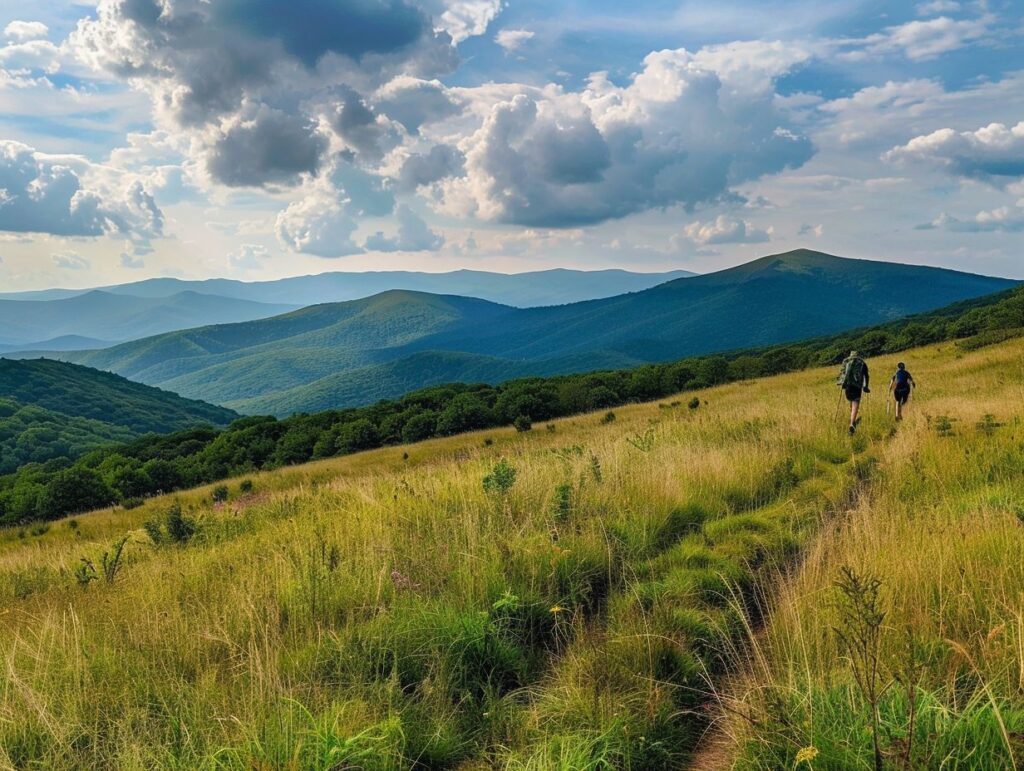Are you an adventurous walker looking for a new challenge?
Discover the best walking routes in the Black Mountains, essential items to pack for a successful walk, and safety tips for a memorable and safe outdoor experience.
Whether you’re a beginner or experienced walker, this guide will help you get the most out of your next walking adventure in the Black Mountains.
Key Takeaways:
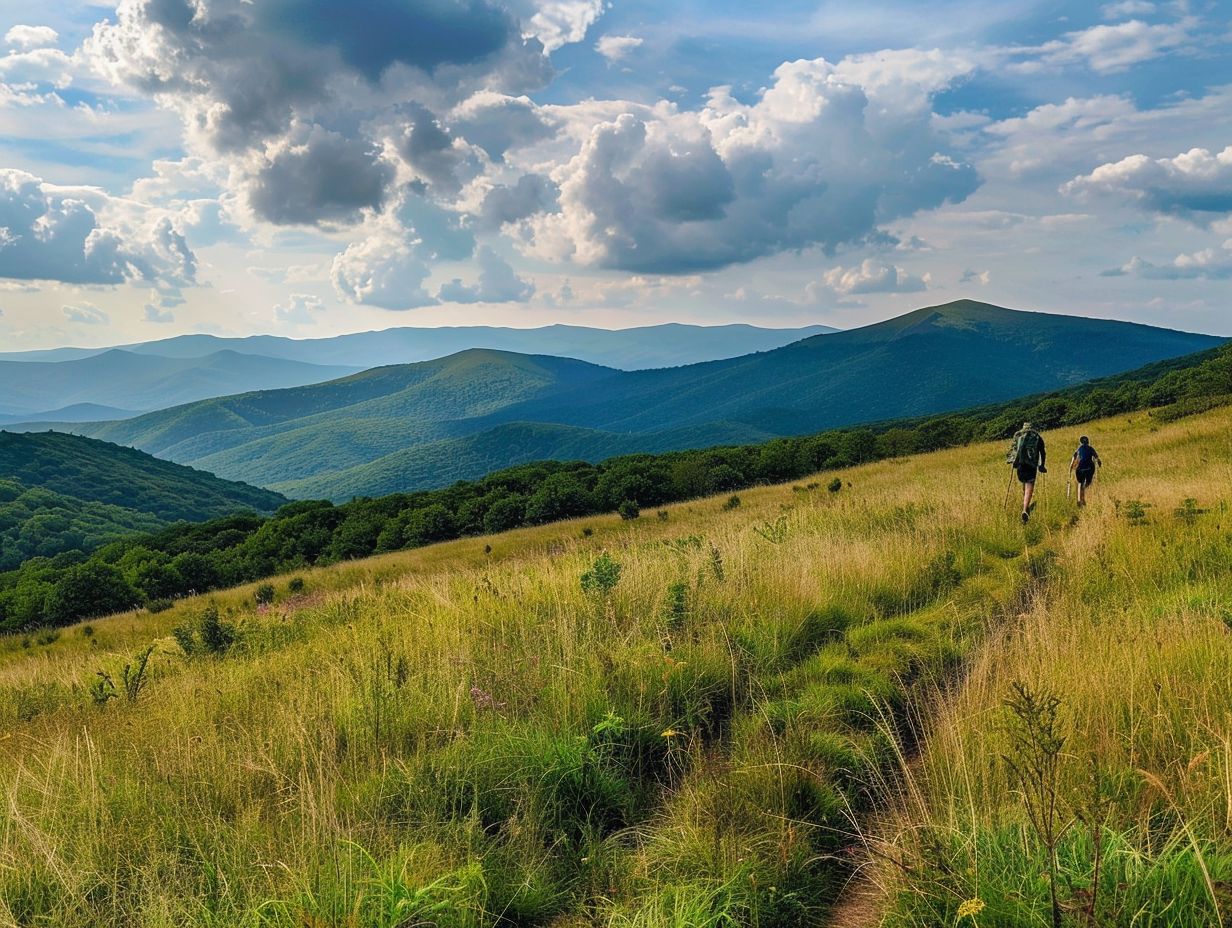
- Proper gear and navigation tools are essential for a safe and enjoyable hike in the Black Mountains.
- Check the weather and inform someone of your hiking plans to stay safe while exploring the Black Mountains.
- The Black Mountains offer a variety of top hiking trails, including the Mount Mitchell Trail and Linville Gorge Loop, for all levels of hikers to enjoy.
Top Hiking Trails in the Black Mountains
The Black Mountains present a variety of awe-inspiring hiking trails in the United States, including the Mount Mitchell Trail and the Black Mountain Crest Trail.
These trails are situated within conservation areas overseen by organisations such as the Appalachian Highlands Conservancy and the National Park Service. This allows hikers to enjoy magnificent mountain vistas and unspoilt natural surroundings.
1. Mount Mitchell Trail
The Mount Mitchell Trail within Mount Mitchell State Park is distinguished for its challenging trail system, which offers hikers unparalleled scenic beauty and panoramic views from the highest peak in the eastern United States.
This renowned trail covers approximately 5.6 miles one way, presenting a strenuous yet invigorating hike for outdoor enthusiasts. Featuring an elevation gain exceeding 3,600 feet, hikers can anticipate a demanding ascent that will challenge both their physical stamina and mental resilience.
Throughout the journey, adventurers will be exposed to a diverse array of flora and fauna indigenous to the region, including wildflowers, hardwood forests, and various bird species that inhabit the lush mountain terrain.
Noteworthy viewpoints provide awe-inspiring vistas of the adjacent Blue Ridge Mountains, serving as a reward for those who successfully navigate the trail and offering unforgettable displays of natural beauty.
2. Black Mountain Crest Trail
The Black Mountain Crest Trail, often acclaimed as one of the most challenging trails in the eastern United States, guides hikers across an array of rugged mountain peaks, offering stunning vistas and numerous observation points throughout the journey.
The trail’s difficulty rating is classified as strenuous, primarily attributed to its demanding terrain, steep inclines, and narrow ridgeline segments.
Hikers will encounter rocky pathways, dense woodlands, and exposed slopes as they progress along the trail. Among the notable peaks traversed by the trail are Mount Mitchell, the highest peak to the east of the Mississippi River, and Mount Craig.
Scenic overlooks such as Deep Gap and Horse Rock present hikers with opportunities to pause, rest, and absorb the breathtaking panoramic views of the encircling mountains and valleys.
3. Linville Gorge Loop
The Linville Gorge Loop located in the DuPont State Forest offers hikers an immersive and enriching experience as they traverse through wooded trails, meandering streams, and captivating waterfalls, positioning itself as a preferred destination for enthusiasts of nature and adventure seekers.
Encompassing an approximate distance of 16 miles, this picturesque loop presents the unspoilt beauty of the forest, showcasing its diverse ecosystem. Throughout the hike, individuals have the opportunity to witness the grandeur of the High Falls as they cascade down, while also having the option to unwind beside the peaceful pools formed by the waterfall.
Moreover, the trail guides hikers past invigorating mountain streams, providing an idyllic setting for a serene respite amidst the verdant surroundings.
The DuPont State Forest is celebrated for its rich biodiversity, housing a plethora of plant and animal species that flourish within this protected natural habitat.
Hikers can access the trailhead from various points situated around the forest and are strongly encouraged to procure any requisite permits and adhere to established regulations to ensure the conservation of this enchanting wilderness.
4. Craggy Gardens Trail
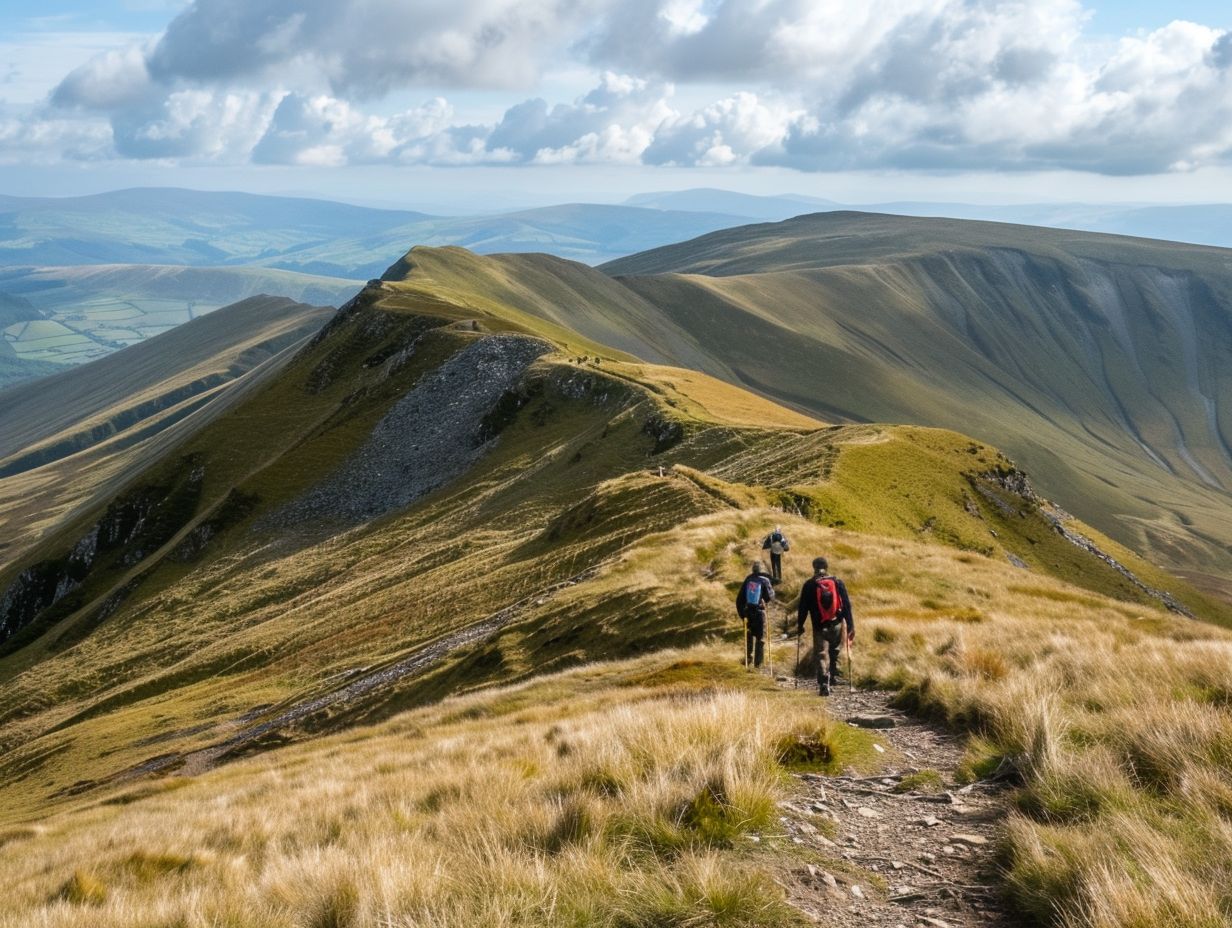
The Craggy Gardens Trail, accessed via the Blue Ridge Parkway, is renowned for its impressive array of wildflowers and breathtaking mountain views, making it an essential destination for any hiker exploring the region.
Covering a distance of approximately 1.4 miles round trip, this trail of moderate difficulty features an elevation gain of around 235 feet, providing a picturesque passage through a varied assortment of flora and fauna. The optimal times to visit for wildflower blooms typically occur in late spring and early summer, when the trail is transformed into a vibrant display of colours.
Throughout the path, hikers can revel in sweeping views of the surrounding mountains, with significant vantage points located at Craggy Pinnacle and Craggy Flats. Facilities at the trailhead include parking, toilet facilities, and picnic areas, while the trail itself is well-maintained, offering benches for relaxation and informative signs that explain the region’s ecology.
Essential Items to Pack for a Hike in the Black Mountains
It is imperative to carefully select the necessary items for a hike in the Black Mountains to guarantee a safe and pleasant experience. This is particularly important considering the diverse trail systems and environments overseen by the National Park Service in the popular hiking locations within the region.
1. Proper Hiking Gear
Appropriate hiking equipment, encompassing appropriate attire and durable footwear, is essential for safely and comfortably traversing the varied terrains of the Black Mountains.
The selection of suitable clothing is paramount to ensure protection against fickle weather conditions, requiring items such as waterproof jackets and moisture-wicking base layers.
Including essential equipment like a reliable rucksack with well-balanced weight distribution can improve the manageability of extensive treks. It is crucial to remember to carry a first aid kit, torch, and emergency whistle for unforeseen circumstances.
For individuals considering multi-day hiking expeditions, the procurement of a sturdy tent and sleeping bag is vital for securing a restful night. Always exercise caution by deliberating over the trail’s level of difficulty and scrutinising the weather forecast to optimise your hiking endeavour through appropriate gear selection.
2. Navigation Tools
Navigation tools such as maps, compasses, and GPS devices are essential for hikers exploring the extensive trail systems of the Black Mountains, aiding in the maintenance of direction and the safe return of individuals.
These tools are of utmost importance as they offer different methods for navigating the challenging terrain and dense forests of the Black Mountains. Maps provide a comprehensive view of the area, while compasses help in determining direction.
GPS devices provide precise location tracking and can act as a valuable backup plan in emergency situations. Ahead of starting a hike, it is vital to familiarise oneself with the functions of these tools and practice their usage. It is recommended to carry spare batteries for electronic devices and protect maps from water damage to ensure their reliability.
3. First-Aid Kit
It is imperative to carry a first-aid kit whilst embarking on a hike in the Black Mountains to address minor injuries and ensure safety.
Basic components of a first-aid kit include adhesive plasters for cuts and grazes, sterile gauze pads for larger wounds, antiseptic wipes for cleaning the injured area, adhesive tape for securing plasters, and scissors for cutting plasters and clothing as necessary.
Furthermore, it is advisable to include items such as tweezers for removing splinters or ticks, a cold pack for minor sprains or swelling, and a CPR mask for emergency situations. Depending on the terrain and weather conditions, additional items like blister pads, insect bite ointment, or a snakebite kit may prove useful for specific hiking environments.
4. Food and Water
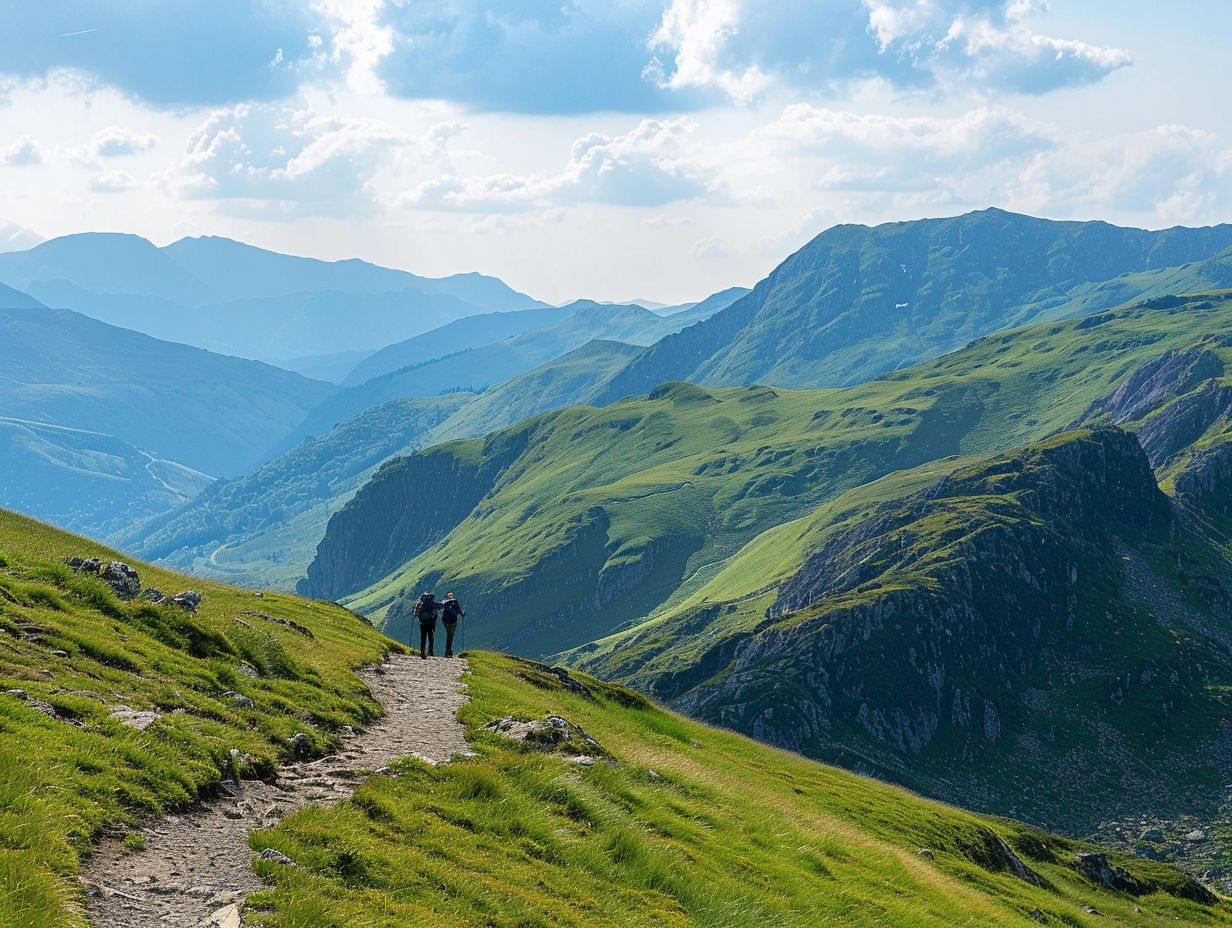
Adequate nutrition and hydration play a vital role in maintaining optimal energy levels and hydration throughout a hiking excursion in the Black Mountains.
When strategising your provisions for the hike, it is advantageous to select provisions that are not only convenient to transport but also offer sustained sustenance. Options such as trail mix, energy bars, and nut butter sandwiches stand out as excellent choices due to their lightweight nature and dense nutritional value.
In terms of hydration, it is recommended to carry a minimum of one litre of water per hour of hiking, adjusting this quantity in accordance with the duration and intensity of the trail. Adequate hydration not only supports stamina but also aids in regulating body temperature and mitigating dehydration-related complications.
Safety Tips for Hiking in the Black Mountains
To ensure safety during hiking expeditions in the Black Mountains, it is imperative to adhere to a range of essential guidelines. These include acquiring a comprehensive understanding of the local environment, abiding by conservation laws, and maintaining awareness of the diverse wildlife species that inhabit the region.
1. Always Check the Weather
It is imperative to consistently check the weather forecast before embarking on a hiking trip to the Black Mountains to ensure safety and preparedness.
The Black Mountains are renowned for their volatile weather patterns, necessitating hikers to remain cautious of abrupt changes in environmental conditions. Rapidly descending fog and mist can impede visibility and complicate navigation, while the region is prone to storms characterised by strong winds and heavy rainfall.
In anticipation of such climatic variations, hikers should equip themselves with waterproof attire, additional layers of clothing, and carry essential navigation tools such as a map and compass as contingencies. Moreover, it is recommended to apprise a trusted individual of one’s hiking itinerary and anticipated return schedule to facilitate emergency response protocols.
2. Inform someone about your hiking plans.
It is imperative for any hiker in the Black Mountains to inform a friend or family member of their hiking plans, which should include the intended route and expected return time. This simple yet crucial step can significantly impact the outcome in case of an emergency.
By sharing these details, hikers provide essential information that can expedite the process of locating them in the event of any difficulties on the trails.
When communicating your hiking plans, it is important to include specifics such as the starting point, planned route, estimated duration of the hike, and any identifiable landmarks or checkpoints along the way.
It is advisable to establish a check-in procedure with the designated contact person, wherein you inform them upon your safe return. In case of a failure to check-in as scheduled, ensure that your contact person is aware of whom to reach out to for assistance.
3. Stay on Marked Trails
Adhering to established trails is fundamental for ensuring safety and environmental preservation in the Black Mountains, as it serves to prevent hikers from becoming disoriented and safeguards the fragile ecosystems present within the trail network.
Straying from assigned paths not only exposes hikers to the risks of disorientation and encountering hazardous terrain but also disrupts the surrounding natural habitat. Deviating off-trail has the potential to damage vegetation, disturb wildlife, and contribute to erosion.
To maintain proper trail etiquette, individuals should consistently watch for trail markers, which may manifest as coloured blazes, cairns, or signage. Should one inadvertently wander off the designated path, it is prudent to refrain from forging ahead. Instead, backtrack until the last recognisable marker is identified, and then proceed cautiously to rejoin the established route.
4. Be Aware of Wildlife
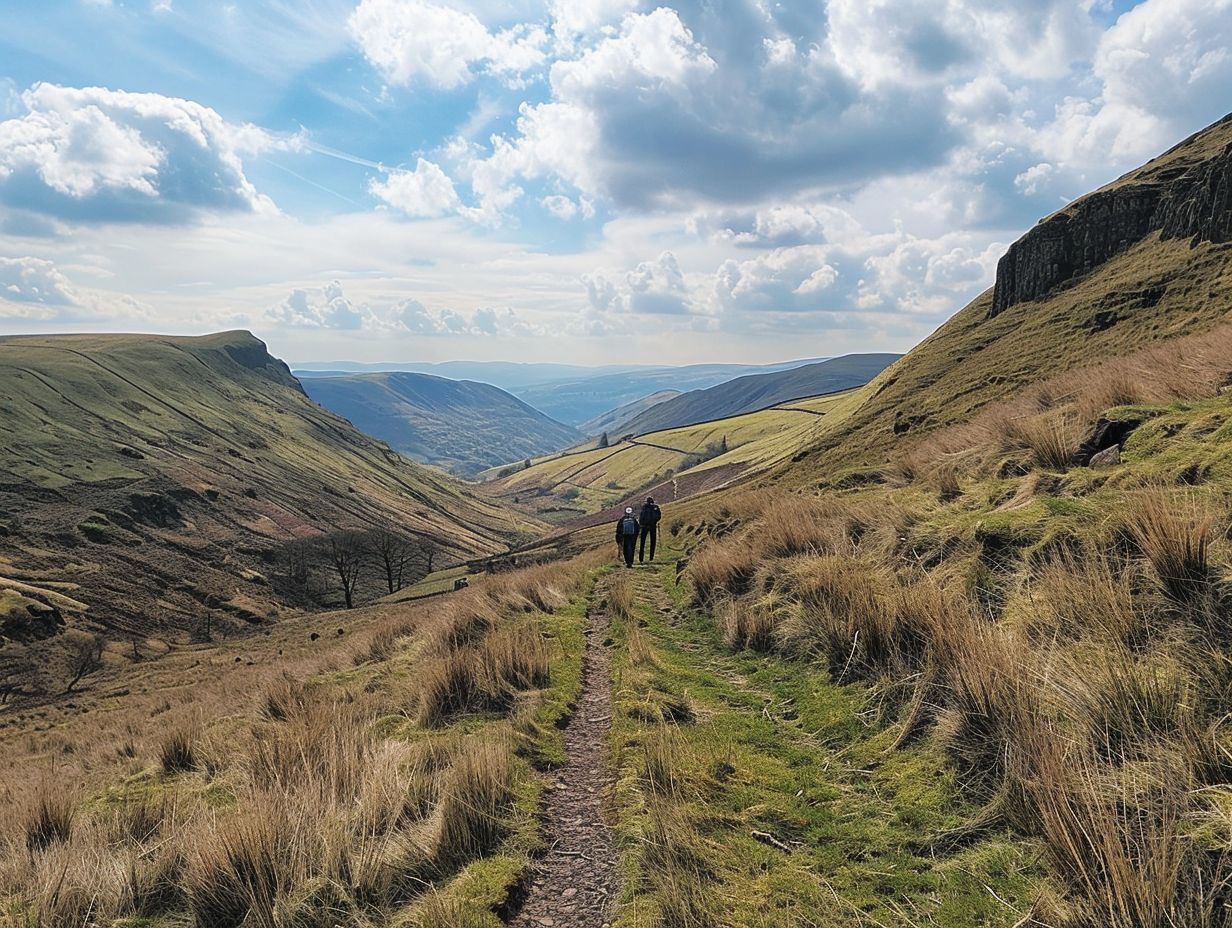
Having an awareness of wildlife and possessing the knowledge of how to safely interact with or avoid animals is essential for any hiker venturing through the diverse environments of the Black Mountains, which host a wide array of flora and fauna.
While traversing the Black Mountains, hikers may encounter common wildlife species such as black bears, white-tailed deer, wild turkeys, and various bird species. When coming across wildlife, hikers should maintain a safe distance, refrain from approaching or feeding the animals, and quietly observe from a distance.
It is imperative to recognise that these animals inhabit their natural environment and should be treated with respect. Through attentiveness to wildlife sightings, hikers can peacefully coexist with the local ecosystem while appreciating the splendour of the outdoors.
Frequently Asked Questions
What are the Black Mountains?
The Black Mountains are a mountain range located in Western North Carolina, part of the larger Appalachian Mountains. They are known for their rugged terrain and scenic views.
What are some popular hiking trails in the Black Mountains?
Some popular hiking trails in the Black Mountains include the Mount Mitchell Trail, the Big Butt Trail, and the Craggy Pinnacle Trail. Each trail offers unique challenges and beautiful scenery.
Are there any safety precautions I should take when hiking in the Black Mountains?
Yes, it is important to take safety precautions when hiking in the Black Mountains. These include staying on designated trails, bringing plenty of water and snacks, and informing someone of your hiking plans.
Do I need any special gear for hiking in the Black Mountains?
While you don’t necessarily need special gear, it is recommended to wear sturdy hiking boots, bring a map and compass, and dress in layers. It is also important to pack sunscreen, bug spray, and a first aid kit.
Are there any beginner-friendly hiking trails in the Black Mountains?
Yes, there are several beginner-friendly hiking trails in the Black Mountains. The Craggy Pinnacle Trail and the Linville Falls Trail are both relatively easy and offer beautiful views.
Can I camp while hiking in the Black Mountains?
Yes, there are several campgrounds in the Black Mountains, including the Mount Mitchell State Park campground and the Black Mountain Campground. You can also backcountry camp with a permit from the U.S. Forest Service.

